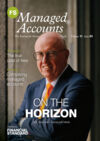Inflows into fixed income ETFs gather paceBY MATTHEW MACREADIE | FRIDAY, 16 MAY 2025 2:00PMFlows into fixed income exchange traded funds (ETFs) are running at a record pace as investors seek higher allocation to income returns and to offset volatile growth assets, including shares, as volatility returns to markets amid fears of a global economic slowdown under the Trump administration. High-quality investment grade corporate bonds, such as Australia's major bank bonds, are a cornerstone of a solid investment portfolio, providing reliable returns and robust performance potential and stability for investors. The good news is that higher interest rates in recent years have translated into higher returns for investors. Australian investment grade corporate bonds returned a healthy 6.2 per cent over the year to 24 March 2025, as measured by the S&P Australia Investment Grade Corporate Bond Index. That has drawn investors into fixed income ETFs listed on the Australian Securities Exchanges (ASX and Cboe). That move by local investors into fixed income is an important one, since the bond market is by far the largest securities market in the world, and Australian investors' allocation to the bond market is very low compared with global peers. Including bonds in an investment portfolio can help diversify portfolio risk since returns aren't traditionally correlated with equities. While the bond market has been neglected by Australian investors in favour of equities, that is changing. International equities ETFs were still the number one broad category for ETF inflows in 2024, but that was followed by Australian equities and then fixed income ETFs in third place, according to an analysis of the market by Betashares. International equities ETFs received $15.1 billion of net inflows versus $2.9 billion in 2023, Australian equities ETFs came in second with $7.1 billion in flows up from $5.2 billion in 2023 and fixed income ETFs were third with $6.1 billion in inflows, compared to $5.3 billion in 2023. The good news for investors is that there are more products available to help Australian investors seek income through passive and active fixed income ETFs. The next wave of innovation will likely come through fixed income ETFs that provide a liquid, low-cost, and tax-efficient or franked structure to replace ASX-listed hybrids as investors seek income solutions for their portfolios. Fixed income corporate bonds ETFs usually include a lot of government bonds and therefore yield around 4.5-5%. The appeal of bonds in 2025 While the penetration of fixed income into the ETF structure has lagged way behind equities, we expect flows to accelerate. Equity penetration through ETFs is 50% more than that of fixed income, but we expect that over the next decade fixed income will close that gap. Demand for fixed income assets is rising as most Australian investors are underweight fixed income in their portfolios but are boosting that exposure given higher interest rates and more volatile share markets in 2025, against the background of slowing economic growth, which benefits bonds. Fixed income ETFs often invest in government bonds or highly rated investment-grade credit. In recent times, demand has risen for floating rate ETFs, whose returns are linked to market interest rates and provide a good hedge against inflation with low-interest rate sensitivity. Going forward, we think corporate bonds and Tier 2 bank debt will draw investors given the changes to the ASX-listed hybrid market which will see Tier 1 bank debt diminish. Under changes introduced by the Australian Prudential Regulation Authority (APRA) in December 2024, banks will not be able to raise funding from hybrid securities after 2024, which are popular among retail investors. The market for hybrids, which are a combination of debt and equity, will be phased out between now and 2032. APRA's decision is significant, particularly for retail investors who hold a large portion of the $40-billion-plus hybrid market. Income Asset Management (IAM) offers two Single Bond ETFs listed on Cboe Australia: ETB01F and ETB01L which offer exposure to Tier 2 bank debt, or high-quality bank subordinated debt from Westpac and Commonwealth Bank. There has been a gap in the market for Single Bond ETFs for some time and importantly, these ETFs cater to the growing demand from Australian investors for fixed income products from banks with lower volatility compared with equities and a greater level of income generation than cash and term deposits. The banking sector presents solid opportunities for Australian investors, as Tier 2 subordinated bonds, which typically yield around 5.5-6% p.a., offer investors different characteristics to suit their income needs. The Westpac bond, for example, has a long issue date, maturing in 2038 and has a fixed to floating rate, while the Commonwealth Bank bond is a floating rate bond. Looking at the year ahead, we remain constructive on spread performance and believe Major Bank Tier 2 bond spreads can potentially compress a further 50bps towards the +100 level. Westpac research expects Tier 2 supply from the major banks over the next fiscal year to be around 15B. Further, major banks asset quality remains solid, and margin pressures are easing which should provide comfort around pressures on earnings and the macro-economic environment, according to recent stress tests performed by APRA on Australian banks. Bond investors can choose from many different investment strategies, depending on the role of fixed income in their portfolios. Passive investment strategies include buying and holding bonds through ETFs. A balanced portfolio strategy that combines fixed and floating rate bonds is key to navigating the year ahead and benefitting from interest rates eventually falling in Australia. In the past, it has been difficult for retail investors to invest in corporate bonds, but ETFs and Single Bond ETFs have made it possible for investors to hold a portfolio of bonds, which can enhance the defensive part of their portfolio. |
Latest News
Pension leaders urge US 401(k) plans to embrace private markets
|Chalmers advocates for Aussie instos on 'Big Beautiful Bill'
|Super Fierce goes into liquidation
Group insurance premiums paid by super funds up 7%
Cover Story

Climbing to the top
MANAGING DIRECTOR
VANGUARD INVESTMENTS AUSTRALIA LTD






















